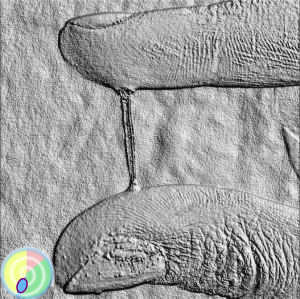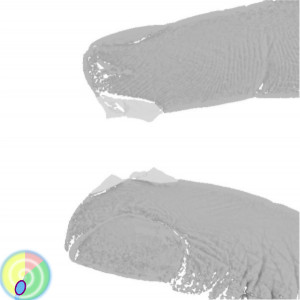Dear women, please do not be afraid of female discharge from your vagina – it is usually only a natural cervical mucus!With this article, you’ll see the difference between abnormal and normal female discharge.
Female Discharge – Definition
In general, any secretion flowing out of the female vagina is called a female discharge (Genital discharge, vaginal discharge). Many immediately associate it with a disease such as vaginal fungus or the like. In most cases, however, it is cervical mucus that usually accompanies every female cycle. Women who observe their cycle and symptoms can tell by the look of the female vaginal discharge or cervical mucus at what stage of their cycle they are. The cycle observation can be done, for example, using the Symptothermal method.
This method is mainly used for contraception or for childbearing, but is also highly recommended for pure cycle observation and strengthens one’s own body consciousness. The cervical mucus is formed in the crypt of the uterine cervix and is then released into the vagina through the slightly open cervix (see the fig. below). The female discharge or cervical mucus is particularly important for health maintenance and protection of the female genital organs, for the transportation of sperm through the vagina and even for the nutrition of the sperm. The normal cervical mucus-female discharge thus has a very high significance for female fertility and is anything but pathological. The following types of female discharge can occur in a woman’s cycle:
White Discharge
Girls usually notice white discharge long before their first period (= menarche). Even about one to two years before the Menarche, estrogen production is so active that the first cervical mucus is released in the crypts of the uterine cervix (= cervix). Later on, women continue to have White discharge – usually a few days after the end of their menstruation, when the estrogens become more and the body prepares for ovulation again.
Yellow Discharge
A yellowish female discharge often occurs in the post-ovulation phase or about a week before ovulation. Yellow discharge can also alternate with white creamy mucus – everything is possible here because every woman experiences her cycle slightly differently. Female discharge of this category is not stretchable and looks something like this:
Transparent Discharge
The more intense the ovulation is, the more fluid, translucent/transparent and stretchy the female discharge becomes. This is a sign of imminent ovulation. The cervix opens slightly in order to facilitate the sperm more easily with an intention of possible fertilisation. Usually, the female discharge/cervical mucus is very stretchy and stringy. This can be easily tested on the toilet with your fingers or toilet tissue.
Discharge before Period
Shortly before the next period, cervical mucus can be observed again. This is also quite logical, as the uterine orifice is already preparing for the menstruation and the uterine cervix is slightly open. Thus, the cervical mucus enters the vagina.
Brown and Bloody Discharge
One to two days before and after menstruation, a brown and/or bloody female discharge may occur. This is called spotting. At the beginning of menstruation, the uterine lining only dissolves slightly before it is properly put into use. After menstruation, the bleeding stops very slowly and can, therefore, be seen as a spotting.
Some women also experience so-called intermenstrual bleeding in the middle of their cycle. These inter-bleedings are often associated with ovulation and are also called ovulation bleeding.
If fertilization has occurred, an implantation bleed can occur even about one week after ovulation, which is again visible as a bloody or brown discharge. This is, of course, very different from one woman to another. For better interpretations of the intermediate bleeding, it is advisable to consult our Menstrual calendar for professionals.
Intense Discharge
Some women naturally have an intense female discharge. This is similar for example to people who sweat much more than others. You should observe the female discharge, in this case, more closely and preferably document it cyclically using the Symptothermal method. With the recordings and then to the gynaecologist if you are unsure or have experienced something extra (see below “Pathological discharge“). As long as no pathological female discharge can be diagnosed, intense discharge is also to be understood as an individual Cervical mucus pattern.
Discharge during pregnancy
Some women try to deduce from the appearance of the cervical mucus whether the fertilization was successful. Unfortunately, it is not possible to determine a pregnancy with the observation of cervical mucus. If possible, a gynaecologist should be consulted to determine a pregnancy. Whoever wishes to learn more about the very first signs of pregnancy can read my article “My first signs of Pregnancy“.
During pregnancy, however, most women observe increased cervical mucus. Here too, the cervical mucus provides protection against bacteria that could penetrate the uterus to the child. If the female discharge during pregnancy is pathological, a doctor must be consulted urgently to protect the growing baby. How to differentiate pathological female discharge from healthy female discharge is explained in the next section.
Pathological Discharge
Pathological female discharge is recognized by the fact that the female discharge has an unpleasantly strong smell. The female discharge is greenish, lumpy or completely unusual compared to the otherwise observed usual cervical mucus. Also, it is worthy of note that vaginal itches, burning sensation, bleeding due to intimate injuries, pain in the genital area or pain during sex is associated with pathological female discharge. In this case, a gynaecologist should be consulted promptly.
In general, pay special attention to the secondary symptoms in order to recognize the pathological discharge and to be able to visit a doctor in time.
Symptoms of abnormal female discharge:
♣ Itching
♣ Burning Sensation
♣ Pain in the Vaginal Area
♣ Extreme Drought
♣ Bad Odor
AND FINALLY THE BEST: Female discharge and the Cervical Mucus

If you have read up to this point, you should have understood that the ugly word “female discharge“ is usually the very natural cervical mucus, which is normal and healthy in almost all shapes and colors. However, many women are also researching about female discharges on the internet because they think that a pregnancy can be detected by the cervical mucus or female discharge. Unfortunately, I have to disappoint these women, because the cervical mucus or female discharge is not suitable for this. However, you can easily tell from your basal body temperature curve, whether you have get pregnant and combination with the cervical mucus determine the most fertile days for ovulation. And when women know when they are fertile, they can get pregnant easier and faster by having sex at the right time. I have put together everything you need for that in my Get Pregnant Starter Set with which many women have successfully get pregnant.
Accept enlightened greetings
Yours Anne







